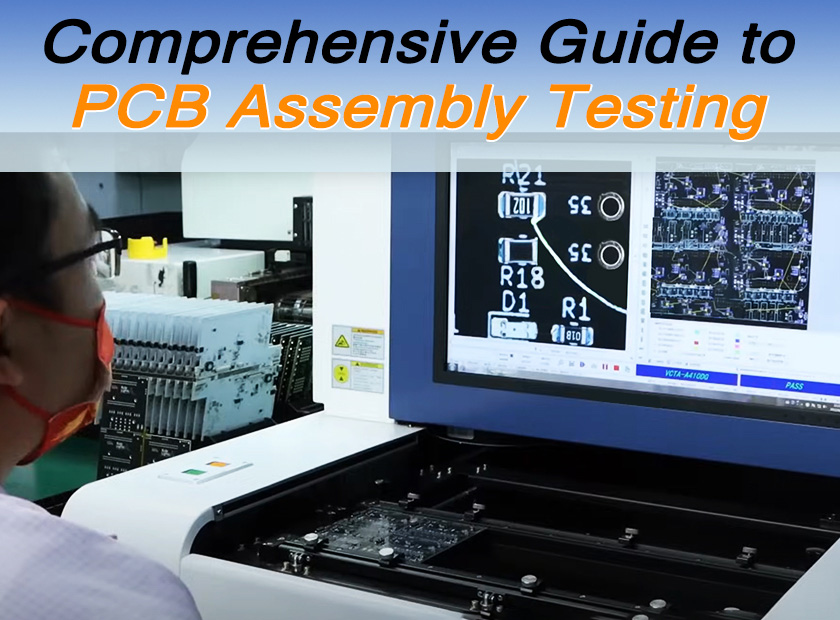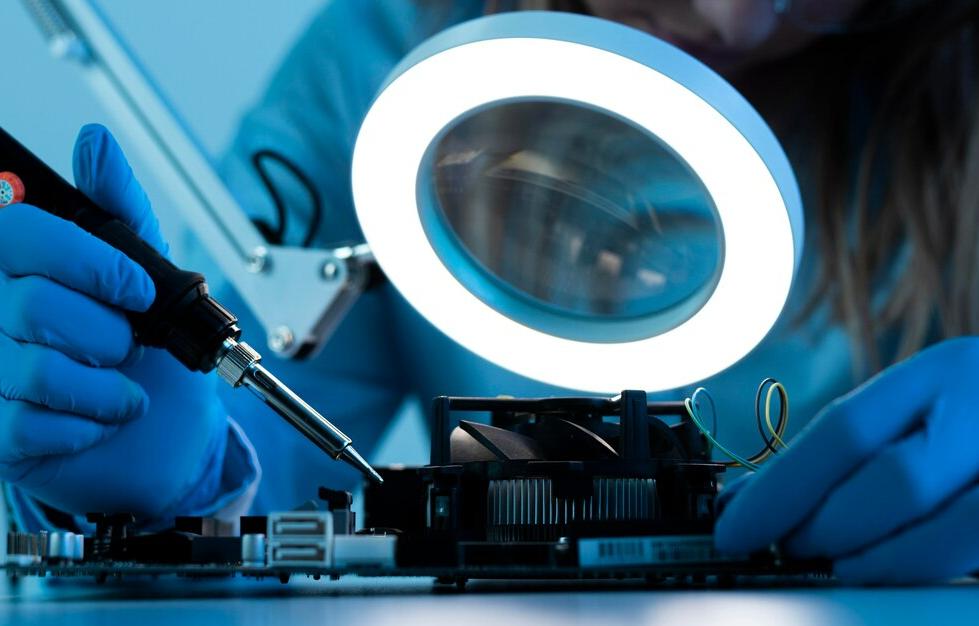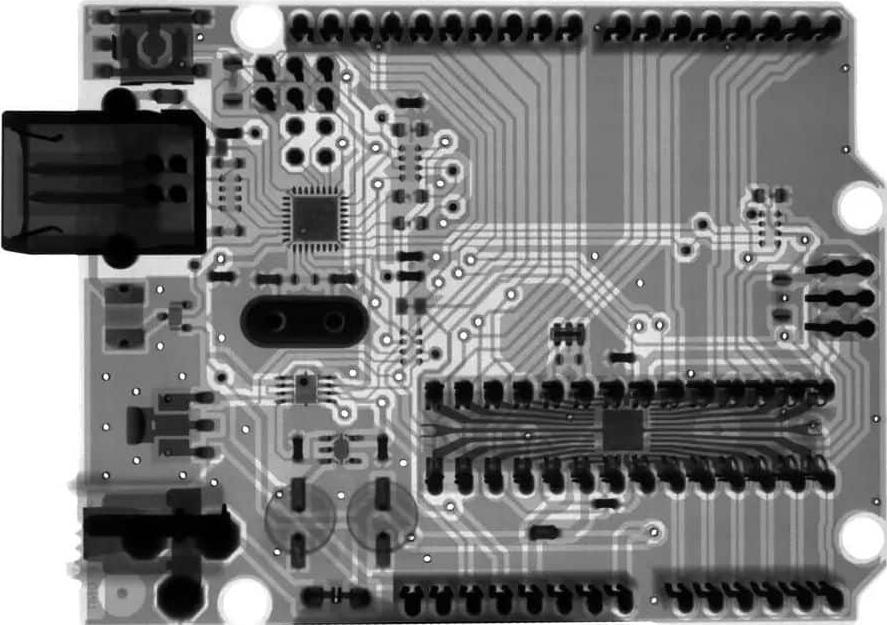Comprehensive Guide to PCB Assembly Testing

Comprehensive Guide to PCB Assembly Testing
Testing is one of the most crucial steps in making PCBA boards. It helps to ensure proper functioning, reliability, and long service life of electronic devices. Elecrow has various ways of detecting and rectifying defective boards and ensuring perfect functionality.
These testing techniques result in electronic devices meeting or exceeding performance and safety expectations and reducing expensive recalls and repairs. In the application domains of electronic design, production process, and quality, understanding the various testing methods for PCB assembly and their role is therefore important. Thus, this article will discuss some of the PCB assembly testing methods and their importance.
What is PCB Assembly Testing?
After the PCB board has been assembled, it should undergo testing to ensure it functions properly and meets standards. The PCB board should function according to the project’s specifications and be defect-free. All these are made possible through a variety of tests conducted.
The overall objective of testing PCBs is to detect various defects, such as improper soldering or malposition of the components or parts that are destroyed during manufacturing. Furthermore, testing can ensure that all the circuits and parts work properly and that the PCB meets all the industry-specific standards and specifications.
Types of PCB Assembly Testing Methods
The primary types of PCB assembly testing methods are explained below:
Visual Inspection
The visual inspection can be performed either manually or using Automated Optical Inspection (AOI). During AOI, high-resolution cameras and computer software are used to automatically inspect PCB for defects. Visual inspection is more suited to obvious defects such as misaligned components, poor solder joints, and missing parts.

X-ray Inspection
It uses automated X-rays to observe the internal structure of the circuit board. It is particularly useful in inspecting solder joints where visual inspection is impossible. It also validates that the Ball Grid Array (BGA) components are attached correctly to each PCB product.

In-Circuit Testing
In-circuit performs the functional test of every component and its connecting wires. Test probes make contact at key points with the board to measure large numbers of electrical parameters. These probes check each component, like resistors and capacitors, to ensure they are correctly placed and functioning. The test also looks for problems like broken connections or short circuits. ICT is precise and quickly identifies issues, making it ideal for high-volume manufacturing.
Functional Testing
This type of testing examines the overall performance of the PCB by simulating real-world conditions. It involves applying power to the board, sending signals, and verifying that the output matches the expected results. Unlike other testing methods that focus on individual components, this approach evaluates the performance of the PCBA board as a whole under conditions it will face in actual use.
To ensure each PCBA board we deliver meets the highest reliability and quality, we offer free functional testing to all our customers. This method is the most efficient way for clients to provide detailed testing documentation when ordering. Elecrow follows this documentation step-by-step to conduct all necessary tests before shipping, ensuring a 100% yield rate for the PCBA boards. By doing so, we meet the unique needs of each project, guaranteeing top quality and performance for every board we produce.

Burn-in Testing
This is a more intensive type of testing. During the test, the components are run at higher temperatures, voltages, and loads for a long period, setting a very different condition from real-world ones. Under such harsh conditions, those likely to fail early will be screened in this process. Special equipment like burn-in chambers is used to maintain precise environmental conditions, while some kind of monitoring system keeps track of performance metrics.
Importance of PCBA Testing Methods
PCBA Testing Methods allow for several advantages, some of which are mentioned below:
Defect Detection: Early identification of defects allows the opportunity to rectify them. This leads to a lower failure rate.
Better Functioning: PCB assembly testing methods help ensure the board operates correctly under expected conditions. It allows us to check for correct signal outputs for the given input signal, timing, and overall performance.
Quality Control: Subjecting PCB boards to a variety of testing methods reduces variability. This is to say, all the components will have consistent manufacturing quality.
Customer Satisfaction: Defect-free and reliable PCBs can undoubtedly increase brand value and customer satisfaction.
Best Practices for PCB Assembly Testing
Employing best practices in PCBA testing guarantees an electronic product's reliability, functionality, and quality. Here are some essential strategies to enhance the testing process:
Design for testability: The PCB is to be designed with adequate test points. There must be sufficient space for probes and other test equipment around the test points.
Process Control and Quality Assurance: Standard test processes shall be followed while testing. Environmental tests will be conducted to see whether they can support the working conditions.
Documentation and Communication: All test procedures, results, and defects found must be well-documented. Proper feedback from design to assembly to testing teams must be created to improve processes constantly and resolve issues early.
Continuous Improvement: The testing strategy shall be periodically accessed. Test data should also be analyzed in pursuit of betterment in light of new technologies and changing requirements.
Challenges in PCBA Testing
Some of the challenges in PCBA testing are discussed below:
Dense Components: Today's PCBs are fabricated with miniature components that are too densely packed to be visually inspected. Test points in such PCBs are inaccessible.
Testing Coverage and Access: Testing points and functionality are difficult to include while designing a PCB. Hence, it becomes quite challenging to achieve comprehensive test coverage.
Signal Integrity Issues: The input signal, while going through electronic systems, is attenuated and may be disrupted by noise, reflection, and crosstalk. This demands ultra-strict testing of the signal integrity.
Cost Constraint: Good-quality testing equipment, such as Automated Testing Equipment and X-ray machines, is costly. Similarly, some testing methods may consume a lot of time, indirectly impacting production time.
Software and Hardware Integration: In testing, there can be a requirement to integrate a lot of software and hardware tools. Making some hardware and software compatible enough to connect seamlessly can be quite challenging.
Future Development on PCBA Testing
AI Integration: Artificial intelligence and machine learning would definitely bring more advanced automation to PCBA testing. Involving machine learning algorithms in this huge data would definitely improve the fault detection rate and time.
Improved In-circuit Testing: This future ICT will eliminate the need for physical contact to measure a wide range of parameters. Compared to the traditional probe, this technique uses capacitive or inductive coupling to access components that are packed tightly together.
3D Automated Optical Inspection (AOI): Inspection of the volume and height of component and solder joints will give advanced inspection capabilities that 3D AOI can deliver. Unlike 2D systems, it would give accurate defect detection and detection of coplanarity issues.
Elecrow has introduced the 3D AOI, which checks all THT(Through-Hole Technology) components to see if they match the specifications on the Bill of Materials. By examining the height and volume of components and solder joints, 3D AOI offers superior inspection capabilities.
Conclusion
The testing methods for PCB assembly are important for the proper working of components. The techniques include visual, X-ray, in-circuit, and functional testing. These allow for detecting flaws and checking whether the boards meet the design and industrial standards. Rigorous testing minimizes failures and costly recalls, leading to increased customer satisfaction and, thus, enhanced trust - basically, the more complex the electronic device, the greater the need for improved testing techniques.
If you need a professional PCBA manufacturer, Elecrow is ready to offer you one-stop PCBA turnkey solution services. We provide all PCB-related services, from PCB design to manufacturing and electronics components. To learn more about Elecrow PCB assembly services, contact us online or visit the Elecrow official website.
